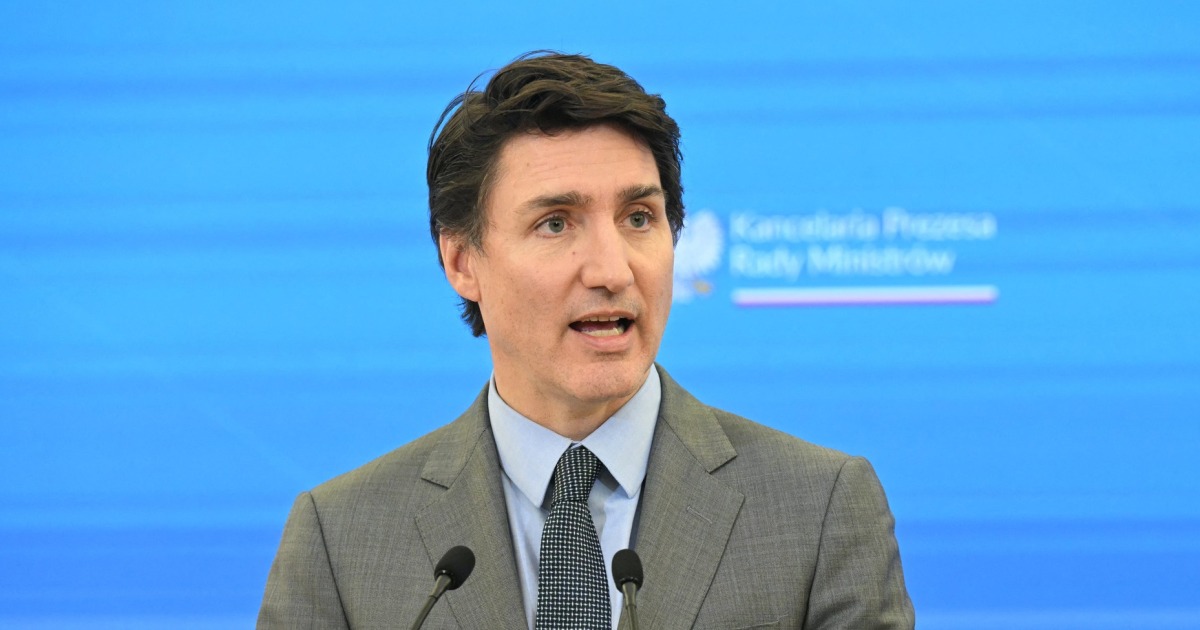Trudeau’s Bold Response: Canada Set to Impose Retaliatory Tariffs on U.S. Goods
In a significant escalation of trade tensions, Canadian Prime Minister Justin Trudeau has declared the government’s intent to impose retaliatory tariffs on U.S. goods. This bold response comes in light of recent executive orders from the United States that have raised concerns within Canada regarding fair trade practices and market access. As these two neighboring countries find themselves in a trade spat, questions arise about the broader implications of these tariffs on economic relations and consumers.
The Context of the Tariff Announcement
Trade relations between Canada and the United States, historically characterized by a strong partnership, have faced increased strain in recent months. The latest U.S. executive orders, perceived as protectionist measures, prompted the Trudeau administration to act decisively. The Canadian government has expressed its commitment to defending Canadian industries and workers from unfair competition.
According to sources from the Canadian Ministry of International Trade, the retaliatory tariffs are aimed at “leveling the playing field” for Canadian businesses adversely affected by U.S. policies. The proposed tariffs will target a range of goods, including consumer products, agricultural commodities, and specific industrial supplies, with the goal of mitigating the impact of U.S. tariffs that have already been implemented.
The Implications for Canada-U.S. Trade Relations
This move by Trudeau has sparked a renewed debate over the future of trade relations between Canada and the U.S. While the imposition of retaliatory tariffs is a common tool in international trade disputes, it raises concerns about a potential tit-for-tat escalation that could harm both economies. Experts warn that prolonged trade tensions could lead to higher prices for consumers and reduced economic growth in both nations.
- Economic Impact: The Canadian economy is heavily reliant on trade with the U.S., with over 75% of Canadian exports going to its southern neighbor. A significant downturn in trade could lead to job losses and reduced investment.
- Consumer Prices: Retaliatory tariffs are likely to increase the prices of certain goods in Canada, ultimately hitting consumers in the pocketbook. Products such as electronics, clothing, and agricultural products could see price hikes.
- Supply Chain Disruptions: The interconnectedness of North American supply chains means that tariffs can create disruptions that impact businesses on both sides of the border.
Public Reaction and Political Ramifications
The announcement of these tariffs has sparked varied reactions from the Canadian public and political leaders. Many Canadians support Trudeau’s firm stance against U.S. trade policies, viewing it as a necessary defense of national interests. On the other hand, some critics argue that escalating tensions with the U.S. could exacerbate problems rather than resolve them.
Political analysts suggest that Trudeau’s government is also using this situation to solidify its position ahead of the next federal elections. By portraying the administration as a defender of Canadian industries, Trudeau aims to rally public support and bolster his party’s standing with key voter demographics.
Potential for Diplomatic Resolution
Despite the current tensions, there remains hope for a diplomatic resolution. Both Canada and the U.S. have historically prioritized dialogue in resolving trade disputes. Experts believe that back-channel negotiations could lead to a de-escalation of tariffs and a return to a more cooperative trade environment.
Trade experts suggest that now is the time for both nations to focus on constructive dialogue. A potential framework for discussions could include:
- Revisiting Trade Agreements: Both countries could explore adjustments to existing trade agreements, such as the United States-Mexico-Canada Agreement (USMCA), to address current concerns while fostering collaboration.
- Joint Task Forces: Establishing task forces to monitor trade practices and ensure compliance with fair trade standards could help mitigate future disputes.
- Consumer Protection Measures: Implementing initiatives that protect consumers from price increases resulting from tariffs could help maintain public support for any agreements reached.
Looking Ahead: The Broader Economic Landscape
As Canada prepares to implement retaliatory tariffs, the broader economic landscape must be considered. The relationship between Canada and the U.S. is not just about trade; it encompasses shared values, cultural ties, and mutual interests in global issues. The potential for economic fallout from this trade dispute serves as a reminder of the delicate balance that exists in international relations.
Furthermore, the global economic environment is already fraught with challenges, including supply chain disruptions due to the COVID-19 pandemic, inflationary pressures, and geopolitical tensions. A prolonged trade war between Canada and the U.S. could exacerbate these issues, making it essential for both governments to find common ground.
Conclusion: A Call for Unity and Cooperation
In conclusion, Trudeau’s bold response to impose retaliatory tariffs on U.S. goods marks a significant chapter in the ongoing saga of Canada-U.S. trade relations. While the immediate impact may be felt in terms of consumer prices and market access, the long-term implications could reshape the economic landscape for both nations. It is crucial for leaders on both sides to prioritize dialogue and cooperation to navigate these turbulent waters.
As we move forward, the hope is that both Canada and the U.S. will recognize the value of their partnership and work towards solutions that benefit their citizens. In the end, unity and collaboration may prove to be the most effective antidotes to the challenges posed by trade disputes and economic uncertainty.
See more CCTV News Daily



